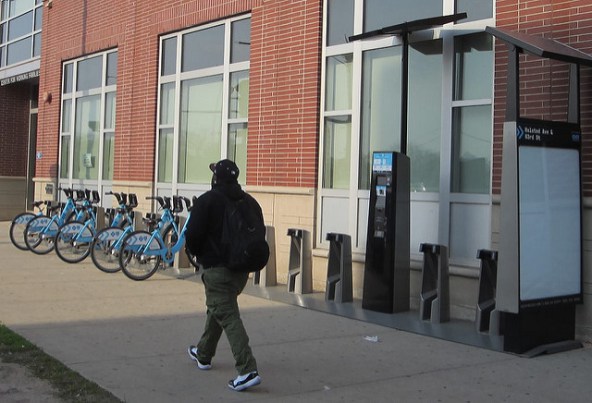While the Divvy bike-share system is generally viewed as a success, a forthcoming report by DePaul University researchers C. Scott Smith, Riley O’Neil, Mallory Livingston, and Stijn Vanderslot takes a closer look at how the system is functioning in outlying neighborhoods and the inner-ring suburbs of Evanston and Oak Park. The report, called “Dimensions of Divvy” examines how land use, transit access, and a wide range of socio-demographic factors explain variations in ridership.
Smith, the primary author, discussed the team’s findings at a presentation last week at DePaul’s downtown campus sponsored by the university’s Chaddick Institute for Metropolitan Development (of which Smith is the assistant director) and the Chicago Chapter of the Transportation Research Forum. “A couple of months ago, Riley and I were like, the data is up there – let’s start crunching the numbers,” Smith said by way of introduction.
“Bike-sharing is at a crossroads” in the region, Smith noted, as he discussed Divvy’s suburban performance. While the stations are getting good use in Evanston, ridership in Oak Park has been lackluster. “I live in Oak Park,” he said. “I never really see anyone on the road…on a Divvy bike, it’s a very rare occurrence.”
Lately Oak Park trustees have been balking about the expense of the program for the village. The 13 local stations were installed in June 2016. The suburb’s contribution to running the program last year, minus revenue, came to $208,000, but only about 12,000 rides were taken, which breaks down to more than $17 per ride.
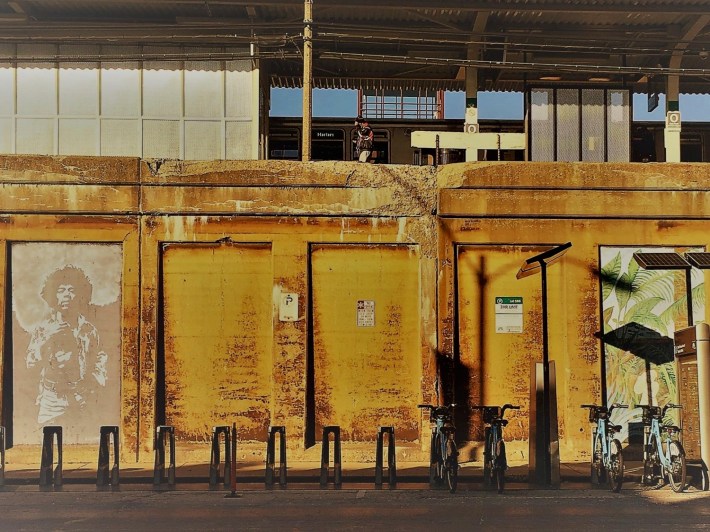
“You get these news articles talking about Divvy being a costly program, where you have the board of trustees wondering whether or not this $200,000 investment is really worth it for the Village,” Smith said. “The latest was in November, where they decided to delay any action on making a decision about the future of Divvy in Oak Park.” The village’s Divvy contract is scheduled for renegotiation in February.
Smith displayed a graph that showed that the average annual number of trips taken per station in Oak Park (994) is less than half of that in Evanston (1,930), and a fraction of the average in Chicago (6,509). One audience member commented that he sees virtually no bicycling of any kind in Oak Park. He added that while Chicago has hundreds of miles of bike lanes, and Evanston also has a healthy grid of bikeways, Oak Park has only four streets with bike lanes.
The report also notes that while the expansion of the Divvy system has greatly increased access in Chicago community areas with “high” and “highest” levels of economic hardship, the vast majority of the trips are happening in areas with “low” or “lowest” levels of hardship. A whopping 96.7 percent of all trips taken from the system launch in summer 2013 to the report publication in late 2017 happened in these more affluent areas. The researchers also found that stations in areas with a high concentration of small children and older adults tended to get less use, partly because children under 16 aren’t officially allowed to use Divvy.
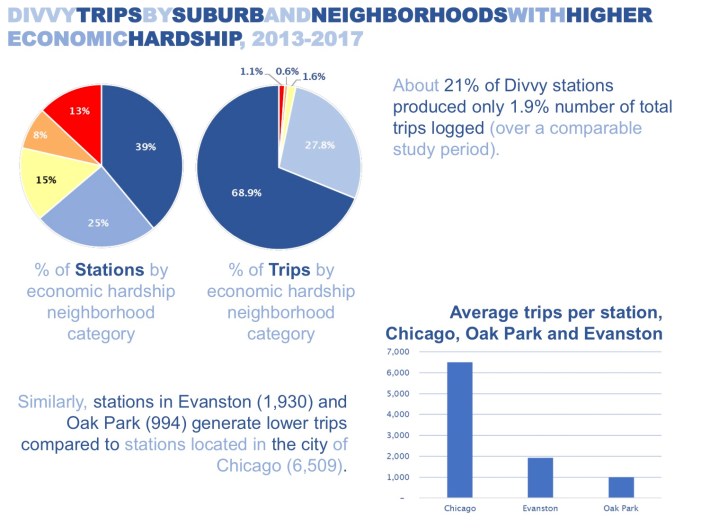
The city of Chicago is hoping to improve those skewed numbers a bit when they install an additional 40 stations this spring. Many of the new docks will be used to add station density in underserved neighborhoods, which will make the network more convenient to use.
Smith also mentioned some interesting general stats about Divvy use. The average number of trips per quarter between 2013 and 2017 fluctuated greatly according to the seasons. While there were an average of 371,248 trips taken each year during the Jul-September quarter, only 96,119 were taken on average during the January-March quarter.
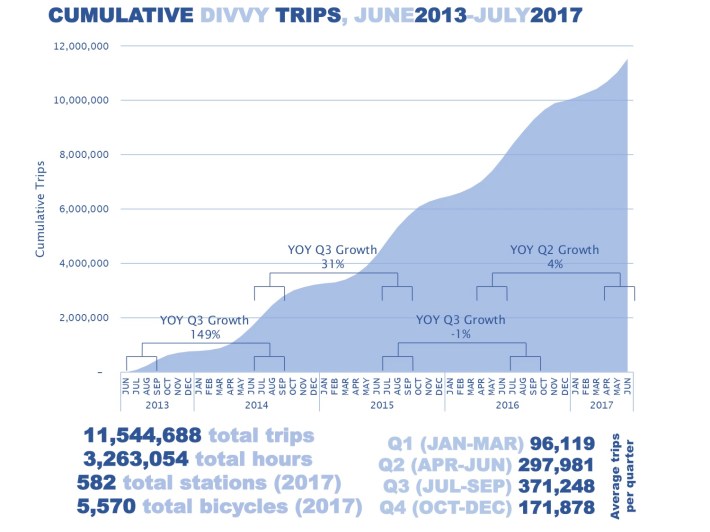
The researchers also found that Divvy membership has become a bit less male-dominated over the years, with the ratio of male to female of Divvy users dropping from 3.5 to 3.0 between 2013 and 2017. During the same period, the ratio of trips taken by annual members compared to day pass users increased from 1.5 to 2.5, that is, currently 71.8 percent of all Divvy trips are made by members.
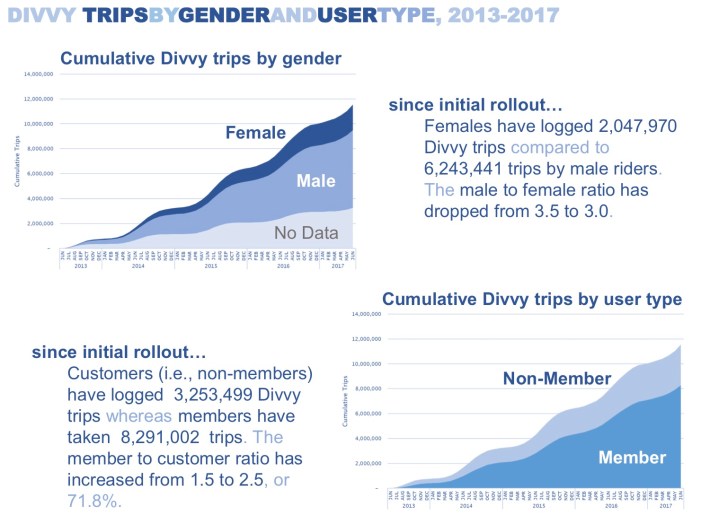
During the question and answer session, an employee of the city of Joliet, an outlying suburb located far from the Divvy service area, mentioned that private bike-share companies, presumably including some dockless bike-share providers, have contacted local officials about the possibility of operating there. In June 2016 Zagster opened three automated rental stations with 18 cruiser bikes in nearby Aurora for use on the Fox River Trail and elsewhere.
“We’re getting interest from other companies other than Divvy, that want to be in our downtown,” the Joliet employee said. “We just haven’t pulled the trigger yet; we’re still kind of researching. We don’t want to roll something out and then have it fail when there’s no ridership.” He added that it would be “a PR nightmare” if stations had to be removed and news headlines said that bike-share didn’t work in Joliet.
